갈색여치
[=긴어리여치 =긴허리여치 =팔공여치]
Paratlanticus ussuriensis (Uvarov
1926)
=Paratlanticus palgongenis Rentz
and Miller 1971
몸길이는 25-30 ㎜이며 전체적으로 어두운 갈색이나 날개의 말단부와 뒷넓적다리마디 아랫면, 복부 아랫면 등이 밝은 녹색을 띈다. 앞날개는 앞가슴등판보다 길게 노출하고 뒷날개는 퇴화하여 짧다. 암컷의 산란관은 다소 아래로 굽었다. 산지의 키 작은 덤불과 등산로 등 주로 바닥에서 생활한다. 잡식성이다. 중국, 러시아에도 분포한다.
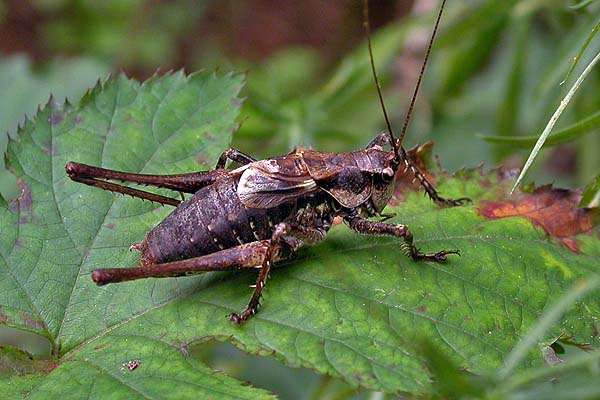
수컷
(Male)
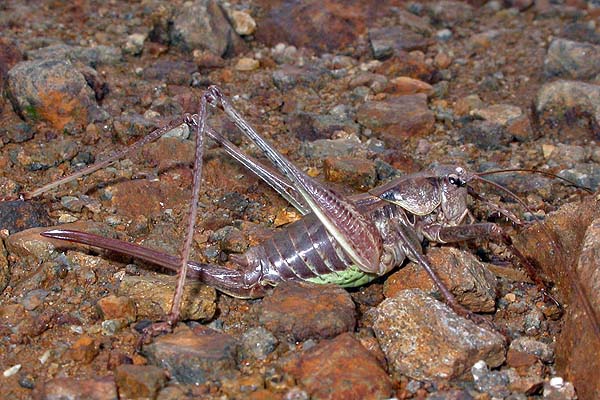
암컷
(Female)
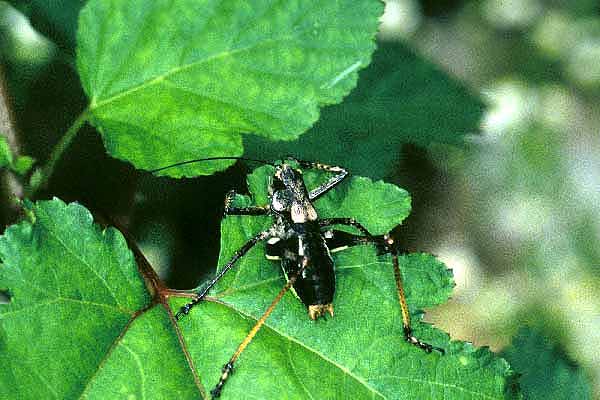
수컷
유충 (Male larva)
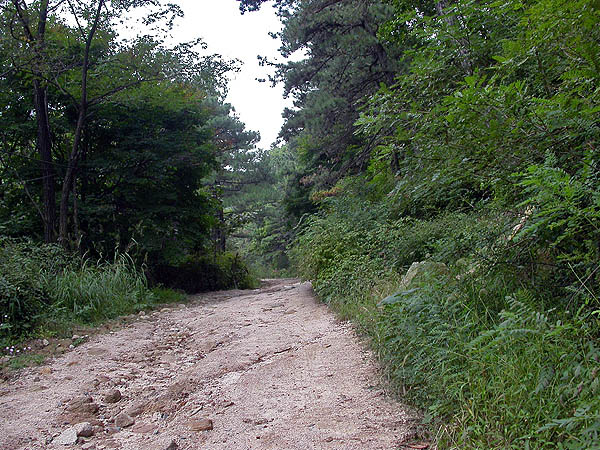
서식처 (Habitat)
Original description:
Atlanticus ussuriensis
Uvarov 1926 Ann. Mag. Nat. Hist. 9(17): 276, fig. 4.
Similar in size and general appearance
to A. sinesis Uv., but differing from it in the genitalia
of both sexes and in more developed elytra.
♂. Face
somewhat reclinate. Fastigium of vertex seen from above narrower
than the horizontal diameter of an eve, constricted at the base;
seen from the front it is narrowed apically, the apex being less
than half as broad as the first antennal joint; upper surface flattened,
with a distinct narrow median sulcus not reaching the apex. Maxillary
palpi with the last joint incrassate apically, about half again
as long as the subapical joint. Occiput very feebly convex.
Pronotum
relatively short. Disc convex in prozona and flat in metazona, constricted
at its anterior third, the width here being half the width of the
hind margin, which is very feebly rounded, practically truncate.
First sulcus well distinct; V-shaped sulcus very distinct; hind
sulcus broad and very shallow, practically straight. Median keel
absent. Lateral keels entirely absent between the front margin and
the V-shaped sulcus; behind the latter they are distinct, but very
broadly rounded. Lateral lobes sloping under an obtuse angle to
the disc, though the angle itself is present only behind, being
completely rounded in the prozona; their lower margin, including
the angles, broadly rounded, the hind angle not at all projecting
downwards; hind margin without the humeral sinus. Prosternal spines
short, conical.
Elytra half again as long as pronotum,
not at all covered by it.
Abdomen without any carinae;
tergites truncate behind. Last tergite truncate behind, with two
short, obtusely triangular lobes in the middle, separated by a small
emargination. Cerci thick and short, scarcely narrowed behind; the
apex attenuated into a pointed hook strongly incurved; on the inner
margin there is a small preapical tubercle. Subgenital plate fairly
broad; hind margin very shallowly and broadly excised; styli longer
than the apical width.
General coloration castaneous-brown.
Antennae blackish brown, with narrow paler wings. First two antennal
joints, apex and sides of fastigium and postocular fasciae are black.
Face pale testaceous, with indefinite brownish markings. Occiput
brown, marmorated with castaneous. Pronotal disc castaneous, darker
anteriorly and posteriorly, with the V-shaped sulcus and a pair
of streaks in front of it black; lateral lobes shining black, but
marmorated with brown, in more than upper half, yellowish in the
rest. Pleurae black, with a broad yellowish horizontal fascia along
the middle. Elytra castaneous; speculum blackish; veins surrounding
it and the hind radial vein, as well as the field adjoining the
latter, black. Anterior and middle legs conspicuously marmorated
and spotted with black. Hind femora with the inner side shining
black to beyond the middle; outer side black to the same extent,
but with a large elongate yellowish spot in the basal half above
and a narrow yellowish stripe along the ]ower margin, not touching,
however, the latter; lower area old ivory-white in the basal third,
black in the middle, testaceous in the rest; spines black. Abdomen
black laterally, above blackish castaneous, with reddish-brown sublateral
stripes, clothed above with yellowish hairs.
♀.
Subgenital plate transverse, with a fine median carinula (perhaps
due to contraction from drying); hind margin broadly and not deeply
angulate-excised in the middle, the lobes broadly rounded. Ovipositor
distinctly longer than the body, regularly and not strongly decurved.
Elytra
as long as pronotum, quite free.
Total length, ♂
(type) 24; ♀ (paratype) 25.5 ; pronotum ♂ 7, ♀ 8; elytra, ♂
11, ♀ 8; hind femur, ♂ 23, ♀ 25; ovipositor, ♀ 27.5 ㎜.
Described
from one male and three females collected by Dr. V. Engelhardt in
the meadows and marshes in the district Spassky, prov. Primorskaya.,
17. viii. 1924.
This fine new species is remarkable
for its pronotum scarcely produced behind and not covering the elytra,
which are perfectly free and considerably longer than in any known
species of the genus.
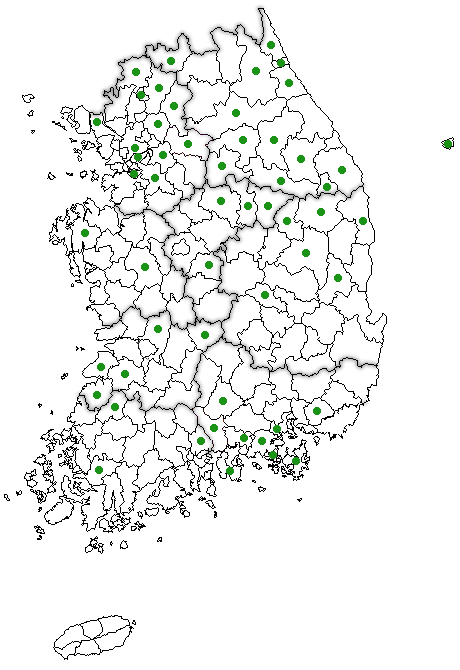
<참고문헌>
● Kim JI and Kim
TW 2001. Taxonomic review of Korean Tettigoniinae
(Orthoptera: Tettigoniidae). Korean J. Entomol. 31(2): 91-100.
●
Yamasaki T. 1986. Notes on Korean and Japanese Paratlanticus
(Orthoptera, Tettigoniidae, Tettigoniinae), with description of a new species.
Kontyu 54(4): 723-733.